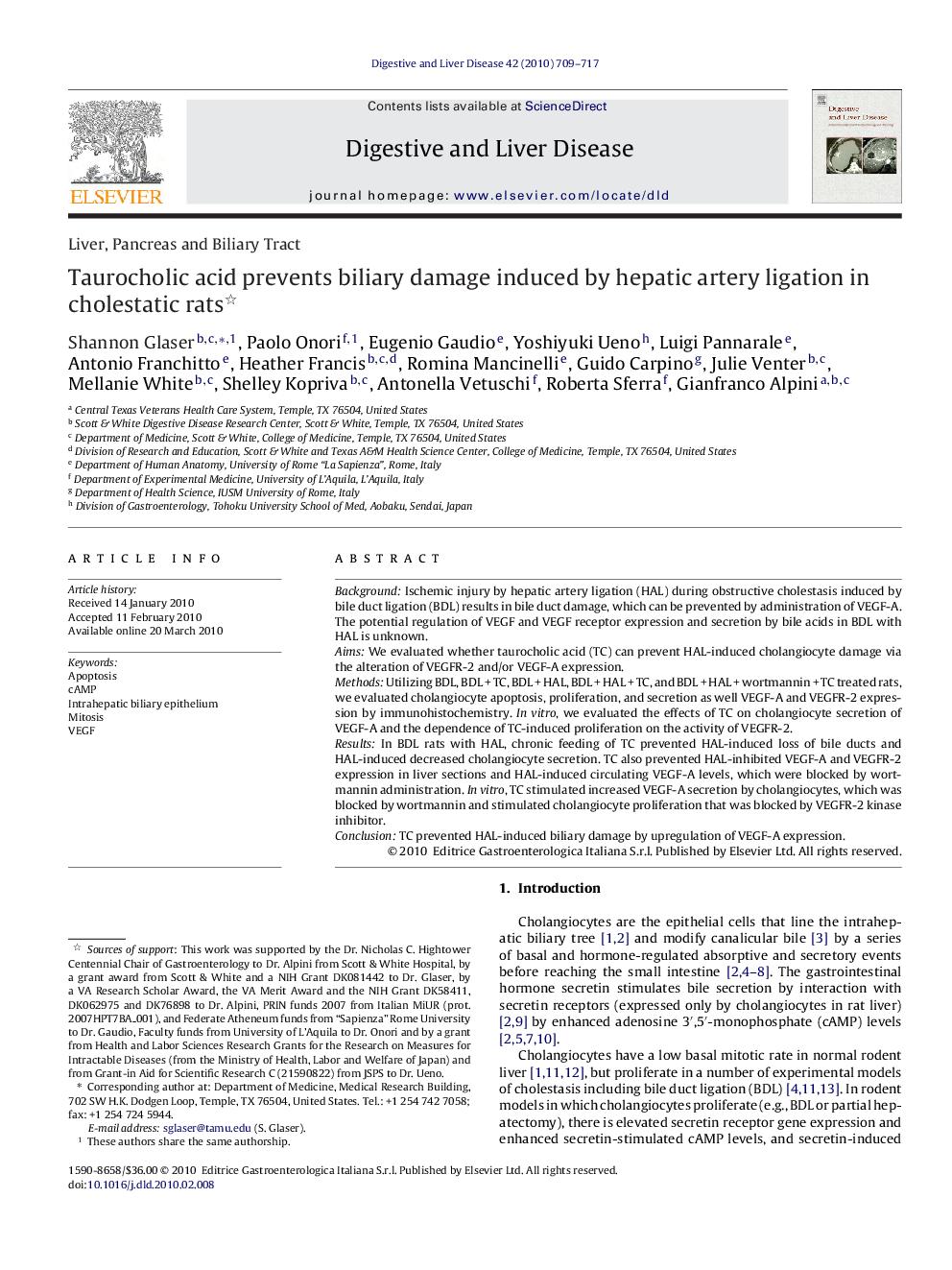| Article ID | Journal | Published Year | Pages | File Type |
|---|---|---|---|---|
| 3263786 | Digestive and Liver Disease | 2010 | 9 Pages |
BackgroundIschemic injury by hepatic artery ligation (HAL) during obstructive cholestasis induced by bile duct ligation (BDL) results in bile duct damage, which can be prevented by administration of VEGF-A. The potential regulation of VEGF and VEGF receptor expression and secretion by bile acids in BDL with HAL is unknown.AimsWe evaluated whether taurocholic acid (TC) can prevent HAL-induced cholangiocyte damage via the alteration of VEGFR-2 and/or VEGF-A expression.MethodsUtilizing BDL, BDL + TC, BDL + HAL, BDL + HAL + TC, and BDL + HAL + wortmannin + TC treated rats, we evaluated cholangiocyte apoptosis, proliferation, and secretion as well VEGF-A and VEGFR-2 expression by immunohistochemistry. In vitro, we evaluated the effects of TC on cholangiocyte secretion of VEGF-A and the dependence of TC-induced proliferation on the activity of VEGFR-2.ResultsIn BDL rats with HAL, chronic feeding of TC prevented HAL-induced loss of bile ducts and HAL-induced decreased cholangiocyte secretion. TC also prevented HAL-inhibited VEGF-A and VEGFR-2 expression in liver sections and HAL-induced circulating VEGF-A levels, which were blocked by wortmannin administration. In vitro, TC stimulated increased VEGF-A secretion by cholangiocytes, which was blocked by wortmannin and stimulated cholangiocyte proliferation that was blocked by VEGFR-2 kinase inhibitor.ConclusionTC prevented HAL-induced biliary damage by upregulation of VEGF-A expression.
